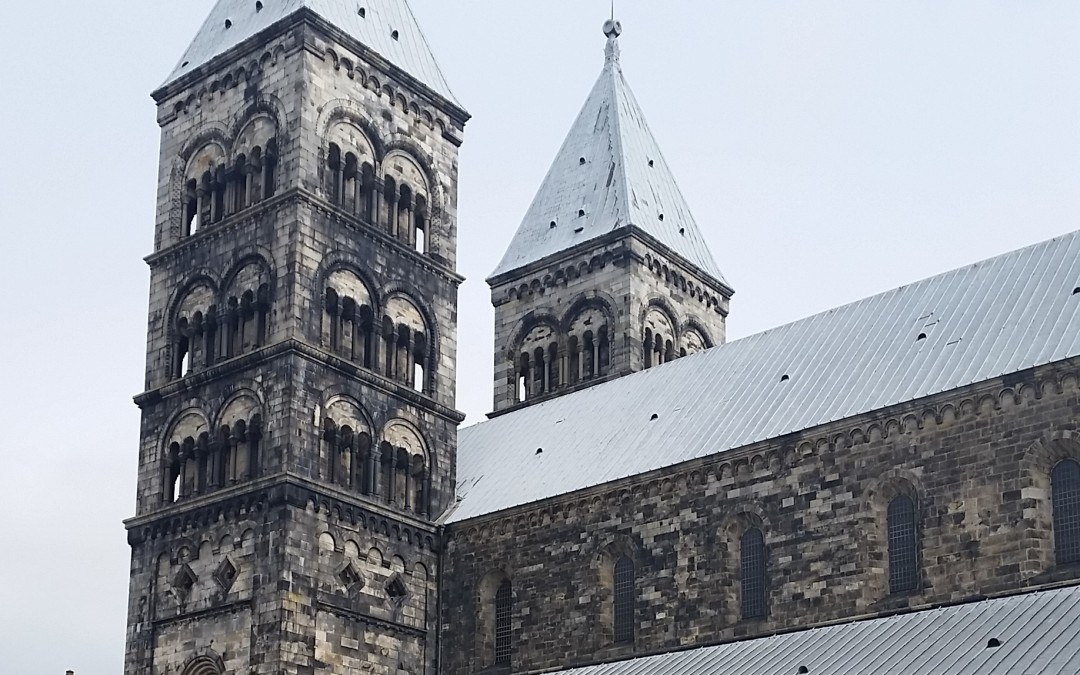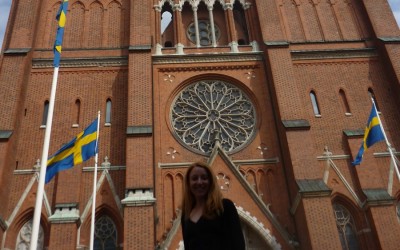There once was a young Swedish woman named Elna Persdottir, who grew up on a farm outside the tiny town of Eslöv in Skåne, in the south of Sweden. Elna was the oldest of five children, the daughter of a tailor, and from her father she learned the skills to become a seamstress. When she was eighteen years old her father passed away – leaving behind his widow, the farm, and debts that had mounted as the pair had taken on increasing loans to pay for their children’s education. As the oldest child, Elna helped provide for her younger siblings by moving to the city of Lund, where she could make a living and hopefully get a little bit of money to send back home.
She lived in several different places in Lund over ten years – but always within walking distance of the beautiful cathedral at the center of town. She would go to church every Sunday, and always gave from what little she had in offering for others needier than herself. She would look at the big astronomical clock with the little procession of people who would come out when it chimed. She remembered it from a few visits to the city from her childhood, and she longed for children of her own.
In Elna’s 30th year, she boarded a ship in Malmö bound for Copenhagen and then to the United States in the hopes that she could find a good man who could become her husband and the father of her children. She Americanized her name to Ellen Piarson and her journey led her to the midwest, where she met the captain of a ship. He offered her a gold piece if she promised to come meet and marry him when his ship arrived in Tacoma, in the new state of Washington on the west coast. She accepted, and traveled all alone to the wild new territory. She found work as a seamstress and ladies maid in the home of a wealthy Tacoma jeweler. And she waited. But the ship never came, and Elna’s dreams of motherhood seemed in jeopardy.
Ellen did make friends, though. She met a Swedish woman named Maria who was also born in Skåne. One day on the way to church, Maria introduced her to her brother, Andrew Olson. Andrew had been born “Anders Olsson,” the son of a Skåne farmer in a small parish called Östra Kärrstorp. Andrew was a small man, but very strong. He had a homestead – a plot of rural land granted to him by the US government – that was his to farm and work and would be passed on to his children someday, once he found a wife. There was no house on the land yet and he could not promise Ellen wealth or anything more than a humble roof over her head, but these two Swedes decided to make a life together. Andrew built a house, they farmed strawberries and chickens and sheep, and Ellen spun the wool into yarn that she knit into garments for their five children.
Swedes were thought of as not particularly smart or well-born at the time, so the children all were teased at school in the city and wanted to learn English. Neither Andrew nor Ellen ever gained mastery of English themselves, and many of their Swedish traditions and the knowledge of their homeland would be lost as the generations passed. But Ellen did tell her children about the city of Lund where she had lived, and about the beautiful cathedral that had an enchanting clock with little people that would parade out when it chimed.
125 years later, her great-great granddaughter returned to the cathedral in Lund and sang in Swedish for high mass. I think that Elna would have been happy.






